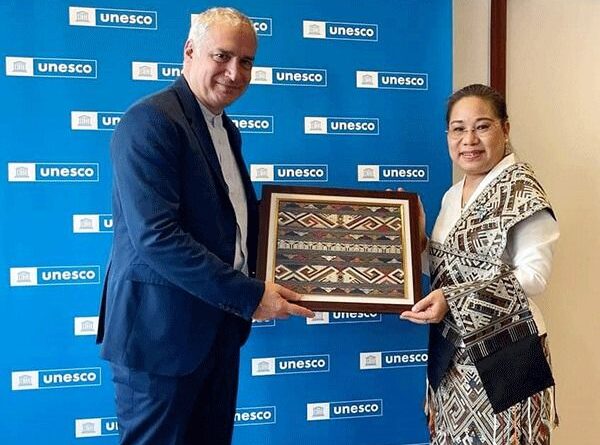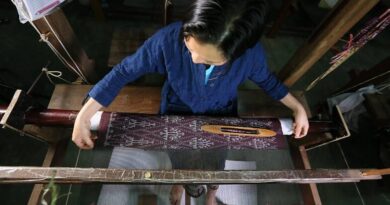Unesco Gives World Heritage Status to Lao Naga Weaving Motif
Source: The Star
Unesco has presented Laos’ Ministry of Information, Culture and Tourism with a certificate designating the traditional naga weaving motif as a form of intangible cultural world heritage, after the UN agency officially inscribed the popular textile pattern on its World Heritage list last year.
Minister of Information, Culture and Tourism, Suanesavanh Vignaket, and her officials travelled to Paris, France, where they received the certificate at the Unesco World Heritage Centre on Feb 28.
The naga weaving motif was approved as a form of intangible cultural world heritage at a meeting of the Intergovernmental Committee for the Safeguarding of Intangible Cultural Heritage held in Botswana last December.
The naga is a mythical, serpent-like creature that lives in rivers. Lao people have great respect for the naga, and naga symbols appear in different formats, with the most common being the incorporation of the motif in handwoven textiles.
The government also plans to nominate Sao Hin Tang, sometimes referred to as the Stonehenge of Laos, in Huaphan province, and the Nakai Nam Theun National Park in Khammuan province as world heritage sites, according to the Ministry of Information, Culture and Tourism.
A group of ancient stone pillars in Huaphan province (Sao Hin Tang), will also be submitted for inscription by Unesco as a cultural world heritage site, while the Nakai Nam Theun National Park will be nominated for inscription as a natural world heritage site.
In addition, authorities are preparing the requisite documents for submission to Unesco to request listing of the Hin Nam No (karst) National Protected Area in Bualapha district, Khammuan province, as Laos’ first natural world heritage site.
The Hin Nam No National Protected Area is contiguous with Vietnam’s Phong Nha-Ke Bang National Park, which was approved as a natural world heritage site in 2003.
Being the home and custodian of a new world heritage site that includes both Hin Nam No and Phong Nha-Ke Bang would make Laos part of a global community that seeks to protect nature’s heritage and values for all mankind.
In addition, Laos would be the first country in South-East Asia to have a transboundary world heritage site together with a neighbouring country.
Laos currently has three World Heritage Sites. The Plain of Jars was listed by Unesco in 2019, while the old quarter of Luang Prabang was inscribed in 1995, followed by Vat Phou Champassak in 2001.
In December 2017, Unesco also inscribed the khaen music of the Lao people as a form of Intangible Cultural Heritage of Humanity.


